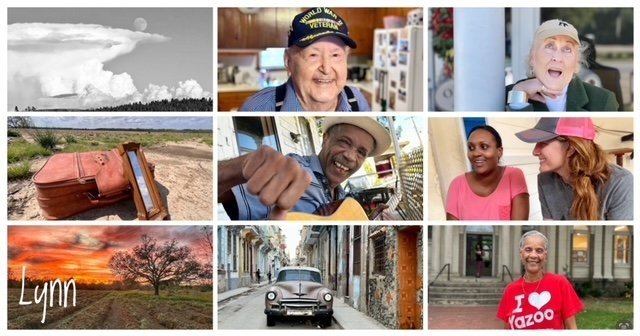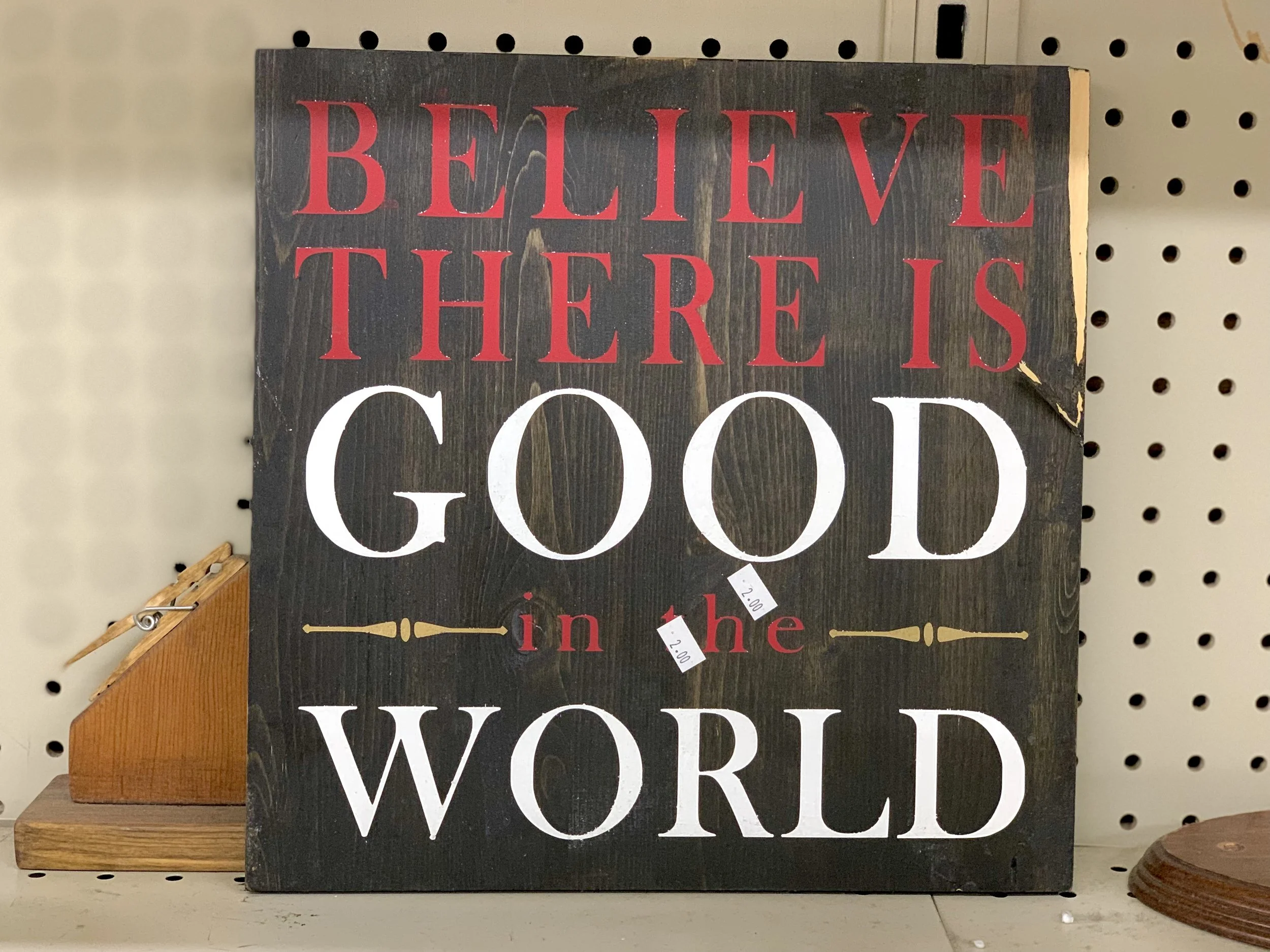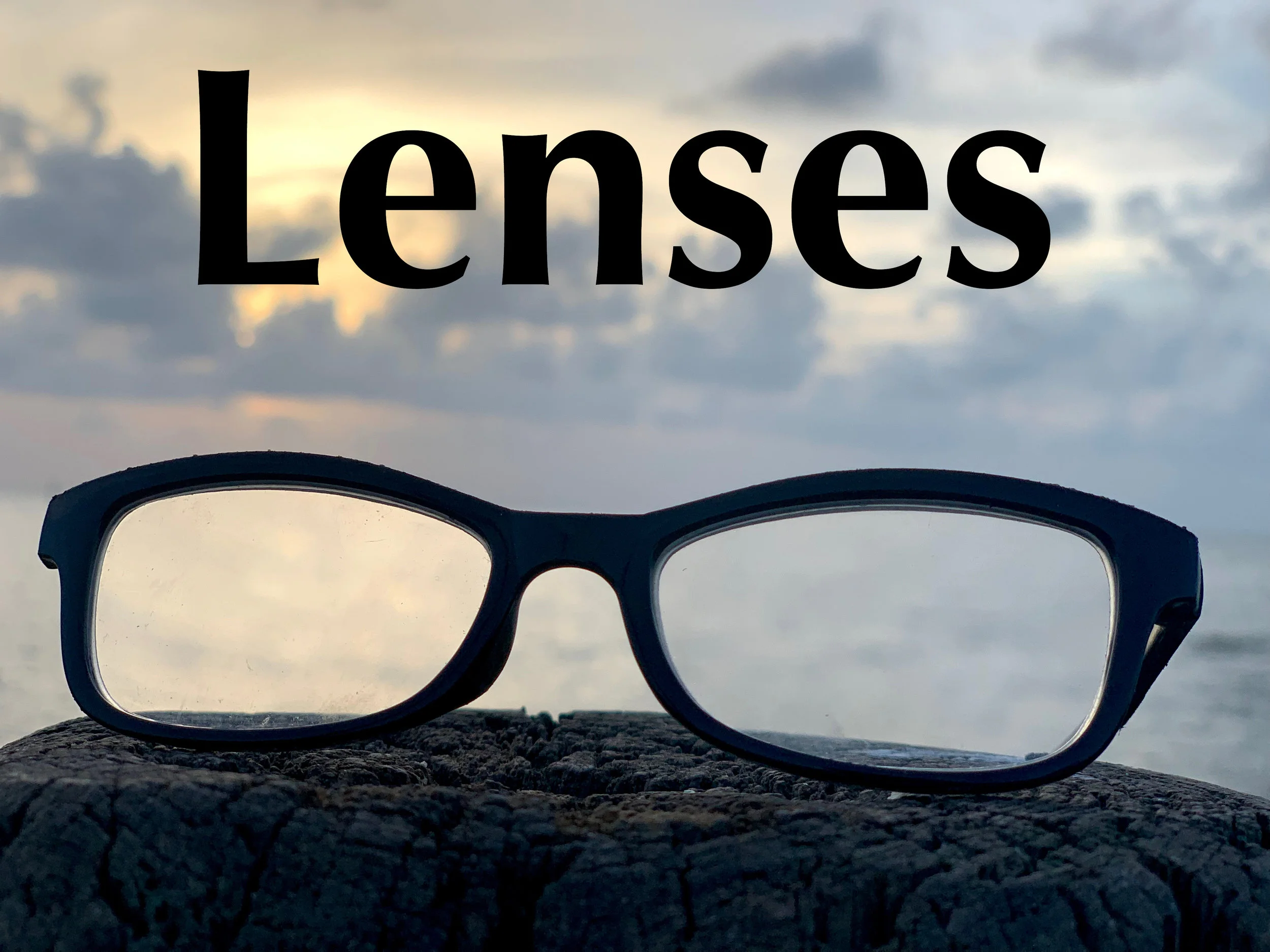Americans Rising Up
Puerto Rico was hit by Maria, a Category 5 hurricane with 155-mile-per-hour winds on September 20, 2017. The storm left the island with no power, food, or water, no communication, and no immediate help.
"This hurricane was angry with the wind and rain crashing down on us," said Felicia, our tour guide for the few of us who arrived early in San Juan, Puerto Rico before our high school youth group mission trip began. “After Irma passed Puerto Rico two weeks before with no damage, we let our guard down with Maria.”
Felicia described landslides, floods, and the fear of not knowing if family members and friends were okay. Her daughter was in the mountains with her father and Felicia hadn't heard from them in four days. She drove toward his home, but the roads up the mountain were closed. Felicia walked and climbed until she reached the point where she couldn’t go any farther.
"I ate my nails waiting for help when I saw her dad’s car come down," she said. "I had big tears when I heard my daughter say ‘Mommy.’”
Response to the victims was slow and made more difficult on a struggling island with failing infrastructure, an antiquated power grid, and $72 billion in debt. The mayor of San Juan, Carmen Yulin Cruz, went on newscasts and late-night shows begging for help. She wore a T-shirt on CNN that read, “Help us we are dying” and blamed bureaucracy and inefficiency across local and federal governments for the deaths of nearly 3,000 people who died in the wake of Maria. She reminded the world that Puerto Ricans are American citizens. After the hurricane, a poll in The New York Times found that only 54 percent of Americans knew that fact.
Felicia's tour provided the history of Puerto Rico and explained how they became Americans. In 1493, on his second voyage to the Americas, Christopher Columbus discovered the island formed from a volcano 150 million years ago. Columbus named it San Juan Bautista after John the Baptist (the capital city later took that name). Months after Columbus landed, the Spaniards began colonizing the island that is 100 miles long and 35 miles wide on the eastern edge of the Caribbean.
"Blend together the native Tainos, Spaniards, and Africans brought here as slaves and you have Puerto Ricans," Felicia explained.
In 1898, during the Spanish-American War, The United States invaded Puerto Rico. The island was transferred to the control of the U.S military, becoming a strategic military base. The Jones-Shafroth Act in 1917 gave U.S. citizenship to Puerto Ricans, but the island 1,000 miles from Miami was never annexed as a state. It remains a territory with one non-voting member in the House of Representatives and no Senators. Puerto Ricans enlist in the American armed forces and fight in American wars, but do not get a voice in the federal government or to vote for the U.S. President.
Territory status feels like limbo to many Puerto Ricans, but independence or statehood seems unlikely.
"Commonwealth, statehood, or independence are our three options and we don’t agree on them," said Angel, a supervisor for the school system who is retiring in December before things get worse. "Our culture is from the Spanish but we are also assimilated to the American way.
“We were bankrupt and unstable before Maria and the hurricane made it worse,” he said. “The government is trying to save money by reducing the pensions of teachers and public servants. Teachers, doctors and other professionals are moving to the United States for a better life. Over 250,000 people left after the hurricane. Some left their cars or houses behind to just get out. It gets harder and harder to live here."
Angel said 250 schools closed after the hurricane. Health clinics have closed, too. Maria destroyed more than 70,000 homes and damaged another 300,000 homes. It left three million people without power and caused an estimated $100 billion in damage.
The population of Puerto Rico is 3.6 million, but many Puerto Ricans now live in the United States (particularly New York City, Philadelphia, and Florida). The median income is $19,343 and the sales tax rate is 11.5 percent. Gas is 73 cents a liter, or approximately $2.92 per gallon.
Before Maria, the island was already in crisis from bond deals made with hedge funds and Wall Street. In 1984, the U.S. Congress excluded Puerto Rico from access to Chapter 9 bankruptcy and restructuring government debt is not an option. Puerto Rico’s constitution also contains a clause that requires general-obligation bonds to be paid ahead of most other government expenses, leaving little money for public services.
Vulture funds buying distressed investments made millions after Maria while life gets harder for those living on the island. A sign along the interstate from San Juan to the San Juan Airport read, “Buitres go home. This is our land.” “Buitres” is the Spanish word for vultures.
The debt crisis and hurricane shook up the island, and many Puerto Ricans have little confidence in their government or what happens next.
"The government makes the life of people hard," said Tata, who retired from teaching ten years ago and served our mission team lunch each day. She taught seventh grade for 35 years and said she got out just in time.
"They knew what was happening after the hurricane, but they never did the things they were supposed to do," she said. "There were supplies, water, and food from the U.S. that they never gave to the people. They just made excuses. There are still people without power.
“I don’t think statehood will come,” she said. “Not next year. Not 100 years. We are broke because of government loans from Wall Street and I don’t think the United States wants to deal with that. It is the people who pay for this. The power and water prices keep going a little bit higher. They cut my teacher pension. It makes a hole that I have to try a little harder to survive."
Blue tarps still cover roofs around San Juan. There are downed billboards, mangled street signs and leaning power poles here and there, but it is possible to drive through Puerto Rico and see no damage. The scars are more internal than external and life is described as "before Maria" and "after Maria." Survivors tell of PTSD, anxiety, and an increase in domestic violence. Posters hang in bathrooms and churches with numbers victims can call for help.
Felicia had no power for six months and waited 16 hours in line to get gas for generators. She talked with the people around her and shared the little food she had to pass the time.
She said FEMA gave everything out to victims of Harvey and Irma with only “Grandma’s Cookies and beef jerky left for Puerto Rico.” The agency later admitted it was overstretched and unprepared for Maria or the complicated problems of the island. Those with losses were told to use FEMA's website to apply for help, but there was no Internet service and no way to apply. Felicia said the mail took six months to get back on track and checks and donations "took forever to get to us."
"We waited in long lines at grocery stores to get one bag of rice, one can of beans and one can of tomatoes," she said. "The days were busy with survival and washing clothes by hand. At night we tried to sleep with generators running all around us. I took a shot of whiskey every night just to calm my nerves and get a few hours of sleep. After months without power and feeling forgotten, people got irritated and angry. Many are still depressed."
Wilfredo sat on his front porch around the corner from the church we helped repair. Dog tags from a 25-year career in the Army hung from his neck down his bare chest. He pointed to the power line leaning toward his house since Maria. He has made numerous phone calls to the power company and hired a lawyer, but no one has fixed the pole. Without power for seven months, he used his generator and gas stove to help feed his neighbors.
On Wilfredo’s left arm is the flag of Puerto Rico on a conga wrapped in chains. "It represents the African slaves who brought the bongos and their music to Puerto Rico," he said "When I went to Iraq, I was in a unit with no Spanish people, so I got a tattoo that was part of my culture and identity. I came back to Puerto Rico because this is my home."
“Puerto Rico is my home” is the reason why older generations refuse to join their children who moved to the United States. Even if their American citizenship makes it easy to leave at any time.
"My daughter lives in Arizona and wants me to move there," said Carlos, who stopped by the church to sweep the sidewalk and pick up trash on our last day there. "It was hard to let my children go and live their own lives and not be close to my grandchildren.
“I am 73 years old and don't know what is going to happen to my country,” he said.
“I don't know how long it will take us to recover from Maria or if our government will ever end the corruption and let us be the country we can be. But the day my Lord calls me, I want to be in Puerto Rico.”
***Watch Lin-Manuel Miranda, creator of the Broadway musical Hamilton, rap about the crisis in his homeland.






